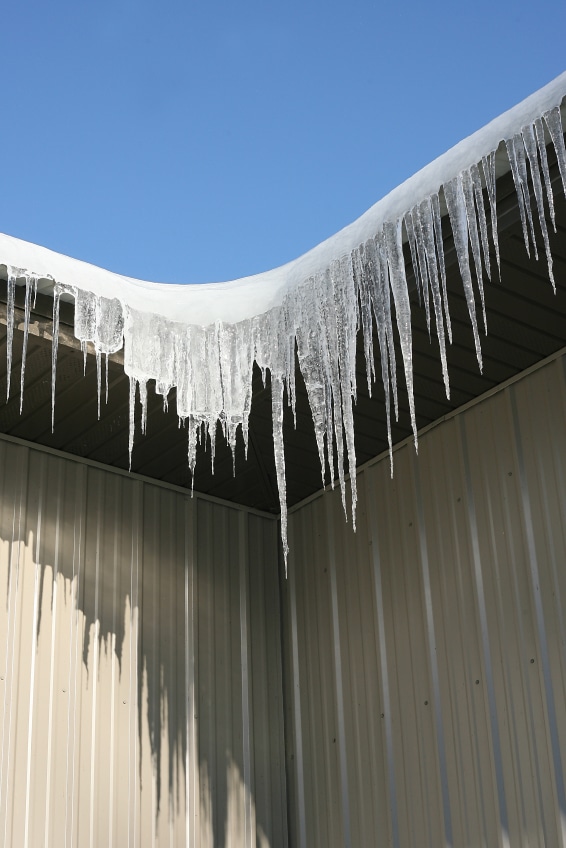Some of the most dangerous and underestimated winter safety issues in America are ice dams. These are essentially large pools of ice that build up on a roofline and eventually come crashing to the ground. Ice dams are destructive, dangerous, and quite costly to repair, but there are some things you can do to avoid them. Here is a look at what every homeowner should know about ice dams.
How Are Ice Dams Formed?
Ice dams are formed when heat trapped in the attic affects every part of the roof but the eaves. As the melted snow trickles down to the eaves, it refreezes and forms a dam. The longer the dam is left untreated, the bigger it gets until it falls off or melts away in the summer. Your job is to maintain proper roof maintenance so that you can avoid this issue altogether.
What Are The Dangers Of Ice Dams?
Ice dams are dangerous for a number of reasons. They can fall off the roof and injure someone walking by, or they can weigh down the roof to the point that you need a complete roof repair. The buildup of ice can also tear off guttering, form a breeding ground for mold, break large holes through your roofing, and more. By preventing ice damage on your roof, you can successfully protect your household and avoid the dangers of ice dams.
How To Prevent Ice Dams From Forming
To prevent ice dams from forming, keep the snow on your roof to a minimum. You can also make a special “melting sock” out of ice melters and panty hose to place on your roof where it is most susceptible to ice dam formation. Make sure that your attic is properly insulated, and if it is not, invest in new insulation before it gets too cold in the winter. This insulation will keep the snow on your roof from melting, which will ultimately control the production of ice dams.
Watch out for icicles on the edge of your roof as those may be signs of possible ice dams. Do not try to knock these down on your own. Instead, use the melting sock mentioned above to warm up the water and keep it from forming into ice. If you can control ice dams on your roof, you will be able to significantly improve the lifetime of your roofing.
